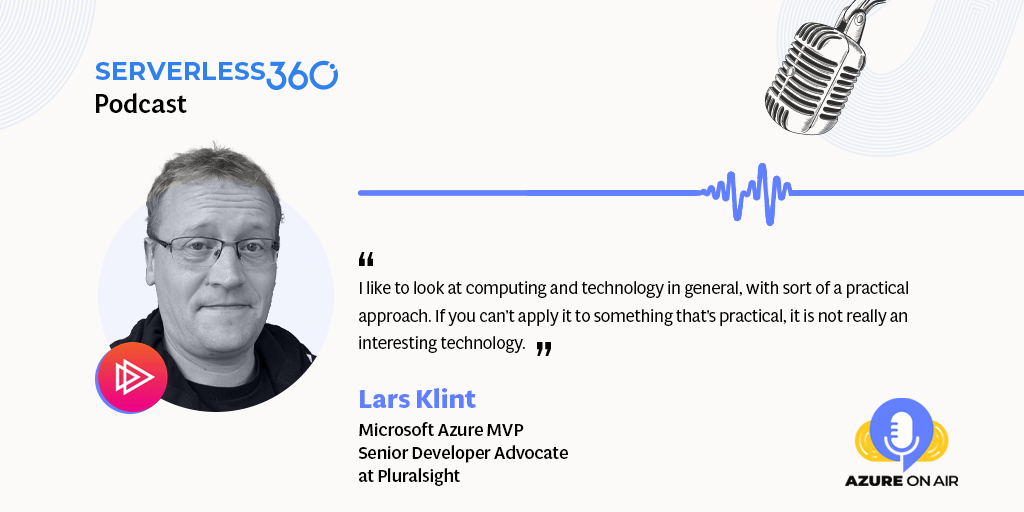Why should I go for Multi-Cloud?
Key Takeaways
Lars Klint is a Senior Developer Evangelist at Pluralsight. He is an Azure instructor with A Cloud Guru, author of various literary publications, trainer of cloud computing, Microsoft MVP, and community leader. Lars is heavily involved in the space of cloud computing services, especially Azure, and he is a published author, solution architect, and writer for numerous publications. Lars has been part of the software development community for the past 20 years, co-organized the DDD Melbourne community conference, and organized developer events with Microsoft.
Lars about Multi-Cloud
Lars has been doing cloud computing for more than ten years since the early stages of Azure. New projects and start-ups focus a lot on cloud computing, which makes sense because it has many advantages. However, there are a lot of established and large companies that don’t necessarily need all the cloud computing right now. Because they already have an established infrastructure, and they have applications that are working fine. Like the old saying is, “If it isn’t broken, don’t fix it.” In Azure, there was a large customer base from before cloud computing. There are a lot of Microsoft customers that go, I don’t need a little manager, but that little bit there, I’d love, and that’s where the whole idea of multi-cloud or even hybrid came into play. There are many advantages and disadvantages to using cloud computing and multi-cloud.
What are the considerations to have while choosing a cloud service provider?
First, an assessment of do I need multi-cloud should be made. Because obviously, it’s much simpler if you’re on a single cloud. If it’s AWS or Azure, most of the services you need are available. They are so developed and mature that it doesn’t need to have necessarily a multi-cloud setup. There could still be certain benefits, for example, pricing; you could choose the service that has the best price. The other one is you move a lot of your application storage onto that cloud. It could have something to do with scalability, which will help you scale it fast. Resilience is also one factor because if you had the same service on multiple clouds, even if one breaks for whatever reason, you can then roll over to the other cloud. Performance is the next factor; some cloud features perform better than others. It could even be risk management, and it’s just a business strategy or business policy that we need to have a backup or failover in all cases. You might go multi-cloud for many reasons, but you must consider them rather than just jumping.
Migration from On-premises to What?
Again, if you have a preferred platform, almost go with that. Azure and AWS are pretty much the same. There is no massive difference in terms of features, but one thing that does change is the tooling. You can retain that toolset if you already have a development team and software developers or infrastructure people who are used to a specific toolset like Visual Studio. Azure doesn’t care what programming language you use if it’s on Azure. Ultimately, have your considerations in line and choose the cloud service provider you want. If you are considering a migration to Azure, then go ahead because there are so many benefits in Azure. In Azure, you get to know the hardware faults and networking equipment, which you usually spend so much time figuring out as a business.


